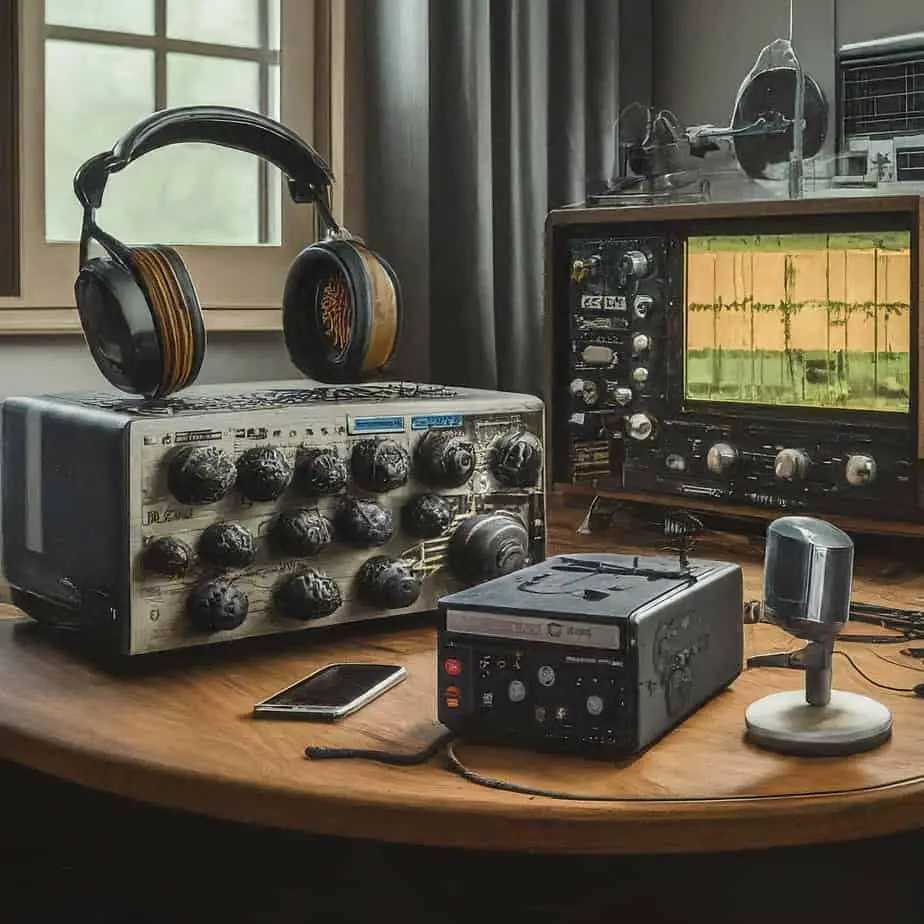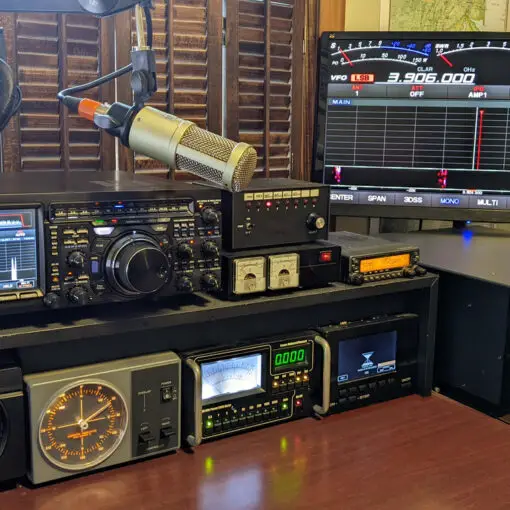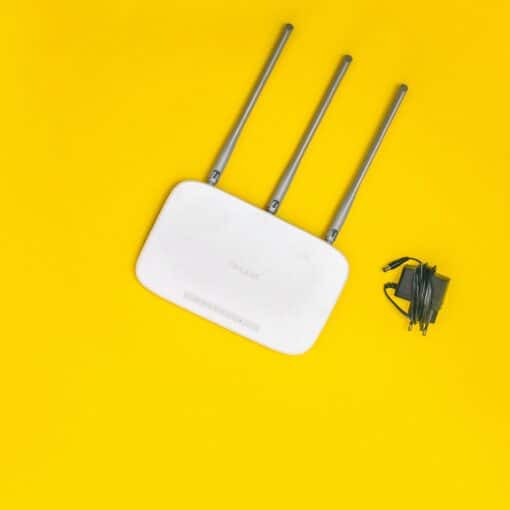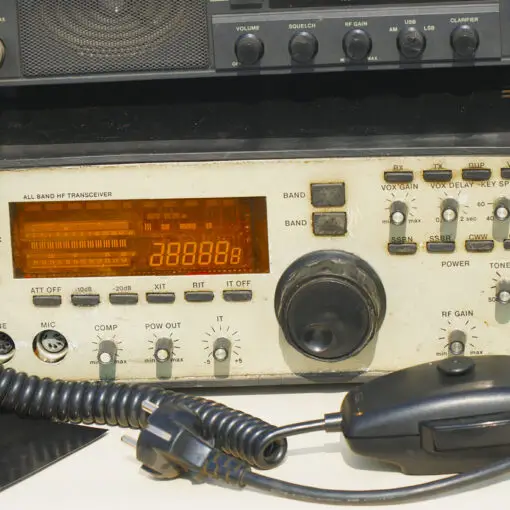Setting up your first ham radio station can be an exciting and rewarding experience. Many beginners might feel overwhelmed with all the technical aspects and equipment choices. This guide will help you understand the essential steps to get your station up and running smoothly.

Ham radio offers a unique way to communicate and connect with others who share a passion for radio. With some basic guidance, it’s possible to start enjoying this hobby right away. Whether it’s choosing the right equipment or positioning your antenna correctly, these tips will make the process easier and more enjoyable.
1) Choose the Right Ham Radio Equipment

Selecting the right equipment is essential for a successful ham radio station. The first item to consider is the transceiver. A transceiver combines a transmitter and a receiver in one unit. There are many types, so choose one that fits your budget and needs.
Next, think about the antenna. Antennas are crucial for transmitting and receiving signals. There are many options, such as dipole, vertical, and Yagi antennas. The choice depends on your location and desired range.
A good power supply is also important. Make sure your power supply matches the requirements of your transceiver. Many hams use a direct current (DC) power supply, which provides reliable power for extended periods.
Coaxial cables and connectors are necessary to link your transceiver to the antenna. These cables come in different qualities. Investing in good-quality cables ensures better signal transmission and reception.
Don’t forget about essential tools and accessories. Items like a standing wave ratio (SWR) meter, a grounding system, and proper mounting hardware are necessary for smooth operation. Check if you need any special adapters or connectors based on the equipment you choose.
By carefully choosing the right ham radio equipment, you set a strong foundation for your station. For more detailed guidance, check out this step-by-step guide for beginners.
2) Set Up a Proper Antenna
A proper antenna is essential for a successful ham radio station. The antenna determines the quality of your transmissions and receptions.
Choosing the right antenna depends on your location and the frequencies you plan to use. Common options include dipole, Yagi, and vertical antennas. Each type has its advantages and ideal uses.
Placement of the antenna is crucial. Install it as high as possible and away from obstructions like buildings or trees. This ensures a clear path for signals, improving performance.
Ensure the antenna is securely mounted. Use strong, weather-resistant materials to prevent damage from wind or rain. Regular inspections can help maintain its condition.
Lastly, correctly tune the antenna for optimal performance. Proper tuning minimizes signal loss and interference, ensuring clearer communication. Committing time to this step pays off in better signal strength and clarity.
For more detailed instructions and guidance, you can check out this step-by-step guide.
3) Understand Radio Frequencies
Understanding radio frequencies is crucial when setting up a ham radio station. Radio frequencies are organized into bands or ranges. These bands define what frequencies you can operate on.
Each band serves different purposes and has unique characteristics. For example, the VHF (Very High Frequency) band is ideal for local communication, while the HF (High Frequency) band is better for long-distance communication.
Operators must also be familiar with frequency allocations. Different countries regulate which frequencies can be used for ham radio. Make sure to check local regulations before transmitting.
Knowing how to tune your radio to the correct frequency is essential. Proper tuning reduces interference and ensures clear communication. It also helps to avoid disrupting other signals.
Understanding the propagation of radio waves is important. Factors like time of day, weather, and geographic location can affect how well radio waves travel.
Equipment like transceivers and antennas need to be compatible with the frequencies you plan to use. Choose equipment that supports your desired bands for optimal performance.
Learning about radio frequencies also involves understanding the difference between AM (Amplitude Modulation) and FM (Frequency Modulation) signals. Each has its advantages and best use cases.
Explore resources that help beginners learn about frequencies, like the step-by-step guide for beginners. These can provide valuable insights into getting started with radio frequencies.
4) Get Your License
To operate a ham radio, you need a license. This ensures you know the rules and how to use the equipment safely. In most countries, there are different levels of licenses. Each level gives you more privileges but requires passing an exam.
Start by studying for the entry-level exam. You can find study guides and practice tests online. Local ham radio clubs also offer classes that can help you prepare.
Once you feel ready, schedule your test. This can often be done through a local club or a national organization. After passing the exam, you will receive your callsign, which is like your personal radio ID.
Remember, obtaining a license is not just a formality. It is essential for joining the ham radio community and accessing all the frequencies legally. Once licensed, you will be able to communicate with other operators around the world.
Check the specific requirements in your country since rules can vary. For more detailed information, visit Amateur Radio Guide.
5) Join a Local Ham Radio Club
Joining a local ham radio club can be extremely beneficial. These clubs are filled with experienced hams who love helping newcomers.
Members of these clubs can provide hands-on assistance. They can help with everything from selecting equipment to troubleshooting issues.
Ham radio clubs often host regular meetings and events. These gatherings are great opportunities to learn and network.
Many clubs also have access to shared resources. This can include specialized tools and equipment that can be costly to buy individually.
For beginners, it’s valuable to have a mentor, sometimes called an “Elmer” in ham radio circles. An Elmer can guide you through the basics and answer your questions.
Joining a club can also provide access to local knowledge. They can help you understand regional regulations and best practices.
Local ham radio clubs often have online forums and social media groups. These platforms are great for staying connected and getting advice anytime.
Connecting with others who share your interest can make the hobby more enjoyable. It can also inspire you to learn and improve your skills continuously.
For more information on joining a ham radio club, Hamuniverse offers useful tips and insights.
6) Master Basic Operating Procedures
Mastering basic operating procedures is essential for any new ham radio operator. These skills ensure smooth communication and help maintain order on the airwaves.
First, learn how to call CQ. This is a general call to any operator listening. It’s important to know the correct way to call and respond. Make sure to keep your messages clear and concise.
Get familiar with tuning and changing modes. Practice adjusting your transceiver to find active frequencies and different modes of communication, such as AM, FM, and SSB.
Understand power levels. Adjusting power levels can help improve your signal and reduce interference. Higher power is not always better; sometimes lower power is more effective and considerate to other operators.
Knowing standard operating practices, such as phonetic alphabets and proper language, is essential. Using terms like “roger” and “over” helps keep communication clear and professional.
Etiquette is crucial. Avoid interrupting ongoing conversations and always identify yourself with your call sign. If someone asks for a break, give them the space they need.
Finally, be patient. Learning these procedures takes time, but practice will ensure you become a proficient operator. Frequent use and listening to experienced operators will improve your skills.
For more on setting up your station, check out this guide. Following these tips can help you operate confidently and responsibly.
Understanding Ham Radio
Ham radio, also known as amateur radio, has a rich history and specific requirements for those interested in participating. It is not just a hobby but a service that requires a license and understanding of radio communication.
History of Ham Radio
Ham radio has played a significant role in communications since the early 20th century. It began as a means for enthusiasts to communicate wirelessly before commercial radio and television. During World War II, ham radio operators provided valuable communication services when traditional systems were disrupted.
In recent decades, ham radio has continued to evolve with technology. It now includes digital modes of communication and satellite operations. Despite the rise of the internet and mobile phones, ham radio remains a vital tool for emergencies and hobbies.
Licensing Requirements
Operating a ham radio legally requires a license from a governmental authority. In the United States, the Federal Communications Commission (FCC) oversees this process. There are three main types of licenses: Technician, General, and Amateur Extra.
Each license level requires passing an exam that covers regulations, operating practices, and technical knowledge.
- Technician License: Entry-level, allowing communication on local and some international frequencies.
- General License: Grants access to more frequencies and operating privileges.
- Amateur Extra License: The highest level, providing full access to all amateur bands.
Achieving these licenses often involves self-study, courses, or joining a ham radio club for guidance and practice.
Essential Equipment for Your Ham Radio Station
Setting up a ham radio station requires several key pieces of equipment. Each component plays a critical role in ensuring optimal performance and reliable communication.
Transceivers
The transceiver is the heart of any ham radio station. It combines both a transmitter and a receiver, allowing operators to communicate effectively. Popular brands include Icom, Kenwood, and Yaesu.
When choosing a transceiver, consider features such as frequency coverage, power output, and user interface. Many modern models include digital displays for ease of use. Frequency tuning and modulation settings are important for clear communication. Connectors and external control options can expand functionality.
Investing in a quality transceiver can improve your overall experience by providing better audio quality and more reliable connections.
Antennas
Antennas are vital for transmitting and receiving signals. They come in various types, including dipole, vertical, and Yagi antennas. A dipole antenna is often recommended for beginners due to its simplicity and effectiveness.
When selecting an antenna, consider the frequency bands you plan to use. Proper installation is crucial. Antennas should be securely mounted and elevated to avoid obstructions. Adjusting their orientation can enhance signal strength. Materials like aluminum or fiberglass offer durability and performance.
Choosing the right antenna can greatly affect your communication range and signal clarity.
Power Supplies
A reliable power supply is essential for a stable ham radio station. Power supplies convert AC electricity to the DC needed by your transceiver. Options include linear and switching power supplies. Linear power supplies are quieter, while switching models are more efficient and lighter.
Voltage stability and current capacity are key factors. Make sure the power supply matches your transceiver’s requirements. Features like short-circuit protection can prevent damage. Brands like Astron and Samlex are well-regarded in the ham radio community.
A dependable power supply ensures that your equipment operates smoothly without interruptions.
Frequently Asked Questions
These FAQs aim to address common concerns about setting up a ham radio station, including equipment essentials, licensing, and best practices.
What equipment is essential for a basic ham radio setup?
For a basic ham radio setup, you will need an antenna, a transceiver, connectors, and a power supply. An entry-level ham radio setup can cost around $100 for basic equipment. More complex setups can reach between $800 to $2,000.
How do I obtain a ham radio license?
To obtain a ham radio license, you need to pass an exam conducted by the FCC. The exam covers basic radio operation and FCC regulations. Local ham radio clubs often offer study materials and practice exams to help applicants prepare.
What is the ideal ham radio for beginners?
For beginners, a 2-meter ham radio is often recommended. These radios are easy to use and widely available. There are many options to choose from, both new and used, to find the best fit for your needs. Explore the market to find the best beginner ham radio.
Can you provide a simple ham radio setup diagram for starters?
A simple ham radio setup includes connecting the antenna to the transceiver using coaxial cable. The transceiver is then connected to the power supply. Place the radio near a window or an area with easy access to the ground rod and antenna coax for optimal performance.
What are the best frequencies for beginner ham radio operators?
Beginner ham radio operators often start on the 2-meter band, specifically 144-148 MHz. These frequencies offer a good range for local communication. They are a great place to practice and learn the basics of ham radio operation.
What is the golden rule of ham radio communication?
The golden rule of ham radio communication is to operate with courtesy and respect. Always listen before you speak, avoid interrupting ongoing conversations, and follow the established communication protocols. This helps ensure a positive experience for all operators.





